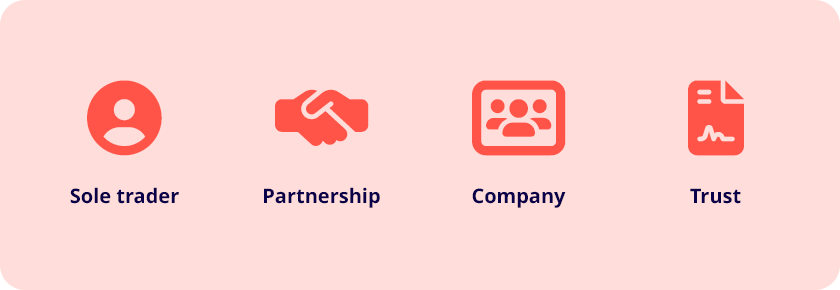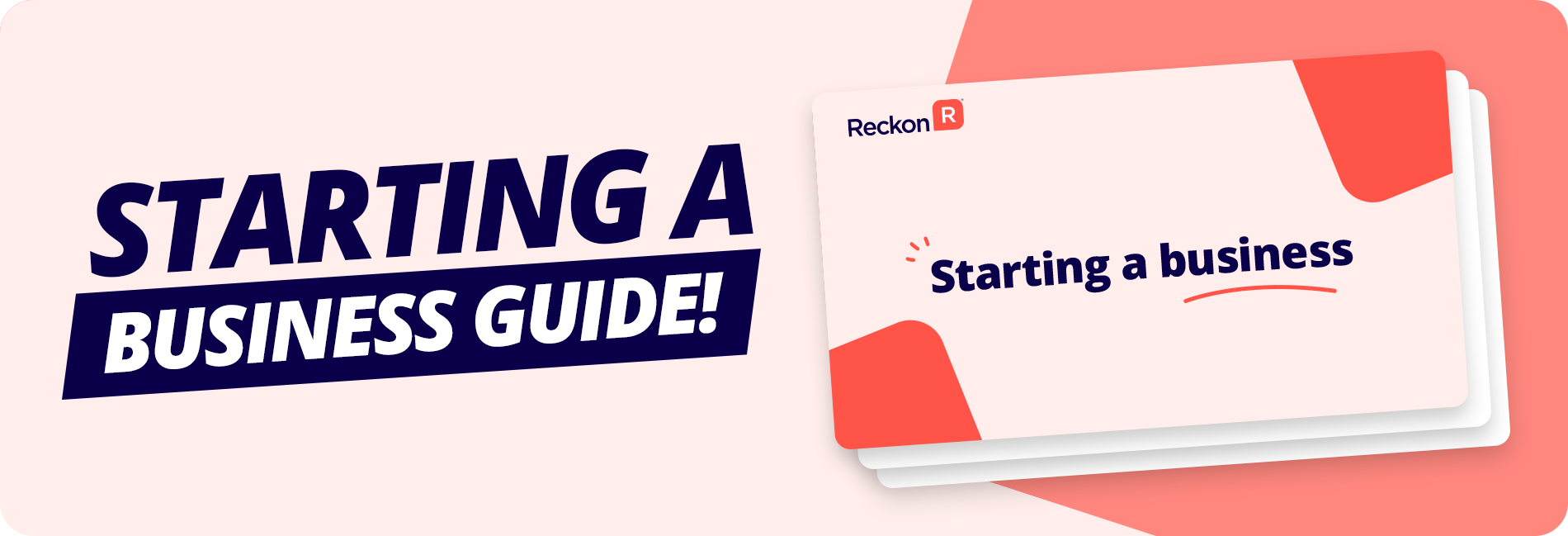When you’re starting a small business in Australia, you’ll need to decide which of the four main types of business structures you’ll operate under.
A business structure refers to the legal construction and obligations of a business or organisation. Your chosen business structure will affect:
- how much tax you must pay
- ongoing reporting requirements
- business set up costs
- the way your business operates
- legal liability.
What are the different types of business structures in Australia?
The types of business structures in Australia are:
- sole trader business structure
- partnership business structure
- company business structure
- trust business structure
Choosing the right business structure is one of most important decisions to make as a new small business owner.
This business structure guide will highlight the advantages and disadvantages of each business type to help you decide which one is most suitable for your specific needs.

1) Sole trader business structure
A sole trader business structure is the simplest type of business, formed when one individual owns the business for which they’re legally responsible.
A sole trader will usually make all the decisions about running the business and are able to employ people to help run their business.
Tax liability: You pay tax as an individual on any income you earn from a sole trader business.
You’re also required to pay GST and submit a business activity statement if your turnover is more than $75,000 a year.
Advantages of a sole trader business structure:
- Easy to set up and maintain.
- You have complete control over the business.
- You retain all the profit.
- You can change business structure easily.
Disadvantages:
- You’re personally liable for any debt the business incurs which means your personal assets (car/house etc) are also at risk.
- If your business makes decent money you’ll start to pay tax at the highest marginal individual income bracket quite quickly.
- Can be hard to take time off.
- Can be harder to obtain finance.
- You’re responsible for paying yourself superannuation, workers compensation and other employee entitlements.
2) Partnership business structure
Partnership business structures are formed when two or more individuals become co-owners of a business.
A partnership business allows individuals to pool their assets and skills to increase their chances of success. A partnership is also able to hire employees to help them run the business.
Tax liability: Partners pay tax as an individual with income from the business divided between partners. You’re also required to pay GST and submit a business activity statement if your turnover is more than $75,000 a year.
Advantages of a partnership business structure:
- Easy to set-up and maintain, with the addition of a partnership agreement.
- Additional owners bring new capital investment and skills to the business.
- Can change business structure easily.
Disadvantages:
- Partnership agreement required to set out the rights and obligations of each of the partners – which can be expensive.
- You must share control of the business.
- You and your partners are personally liable for any debts the partnership incurs which means your personal assets (car/house etc) are also at risk.
- If your business makes decent money each partner will start to pay tax at the highest marginal individual income bracket quite quickly.
- There can be disagreements among partners which can cause disruption to the business.
3) Company business structure
A company business structure is formed when an owner registers their business with the Australian Securities and Investments Commission (ASIC).
The business then becomes a separate legal entity from the original business owner.
This means the company itself can own assets and enter into contracts directly with third parties.
Tax liability: Companies are subject to company tax rates which are different than an individual tax rates. The current company tax rate is either 27.5% or 30% depending on the criteria you meet. You’re also required to pay GST if your turnover is more than $75,000 a year.
Advantages of a company business structure:
- Reduced personal responsibility for any business debts and liabilities and the company is a separate legal entity.
- Company tax rates are much lower than the higher marginal tax rates and is therefore far more tax effective once your business earns over a certain amount.
- Easier to raise finance.
Disadvantages:
- Business operations are controlled by directors and owned by shareholders.
- Higher set up costs associated with incorporating the new company.
- More paperwork, reporting and ongoing compliance requirements and costs.
- You must understand and comply with all obligations under the Corporations Act 2001.
- An annual company tax return to be lodged with the ATO.
4) Trust business structure
A trust business structure, in its basic form, is a type of business which legally holds property or income for the benefit of others.
The trustee can be either an individual or a company and is responsible for any debts and liabilities.
Trusts are commonly used to manage, protect, and pass on family assets including shares, personal property, and the family’s business from one generation to another.
Running your business through a trust involves a trustee owning and operating the business’s assets and distributing the business’s income to the beneficiaries included in the trust deed.
Tax liability: The trustee distributes the business profits to the beneficiaries who then pay tax on the income received under their marginal individual tax rates.
Advantages of a trust business structure:
- Reduced personal responsibility for any business debts and liabilities if the trustee is a company.
- Trusts typically don’t pay tax, provided they distribute all the profits. This is because profits are distributed annually to beneficiaries who pay tax individually.
- Flexibility in distributing profits to beneficiaries. This allows income to be distributed at the trustee’s discretion to beneficiaries with the lowest marginal tax rates to minimise the total tax beneficiaries pay.
Disadvantages:
- Typically, a trust structure is more expensive and complex to establish and maintain than a company structure.
- Limited lifespan (usually 80 years).
- Difficult to dissolve or alter when established.
How to choose a business structure?
Knowing how to choose a business structure is essential, although in many cases the structure can be changed.
Deciding which business structure is the most suitable for your needs depends on the nature of your business. Some options have benefits on paper, but they may not be the right choice for you.
Consider the following table when deciding which type of business structure to create.
| Sole Trader | Partnership | Company | Trust | |
|---|---|---|---|---|
| Is the structure hard to set up? | No | No | Yes | Yes |
| Is it expensive to set-up? | No | No | Yes | Yes |
| Do I have complete control? | Yes | No | No | No |
| Are there complex reporting requirements? | No | No | Yes | Yes |
| Are my assets under threat if my business goes into debt? | Yes | Yes | No | No |
| Do I receive full profits made from the business? | Yes | No | No | No |
| Can I employ staff? | Yes | Yes | Yes | Yes |
| Can I change the legal structure easily? | Yes | Yes | No | No |
| Is it easy to raise capital? | No | Yes | Yes | Yes |
| Is it easy to dissolve or exit? | Yes | Yes | Yes | No |
Still unsure? This Australian Government tool can help you work out the type of business structure that will best suit your needs.
























